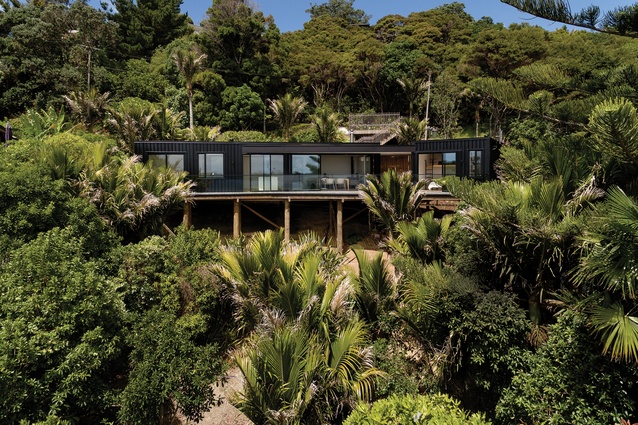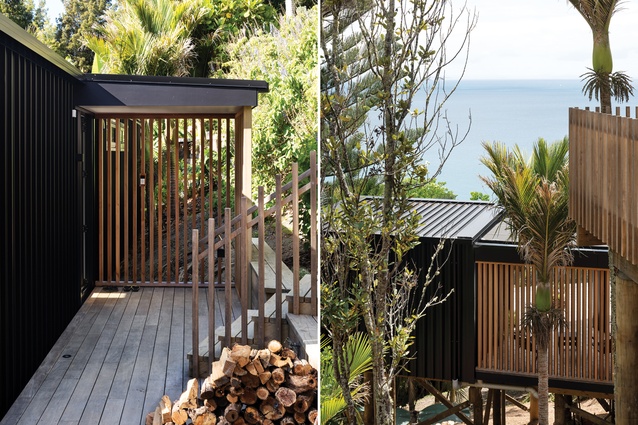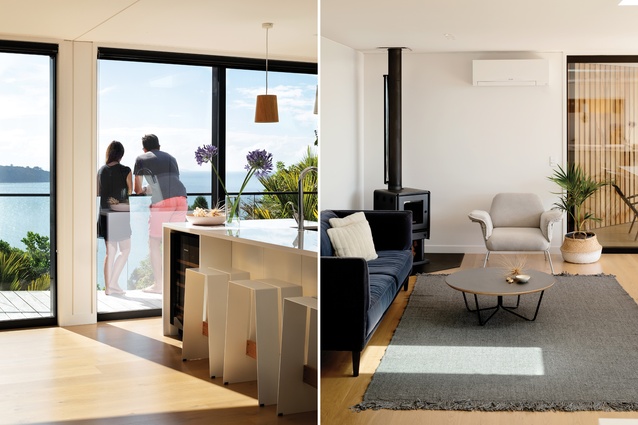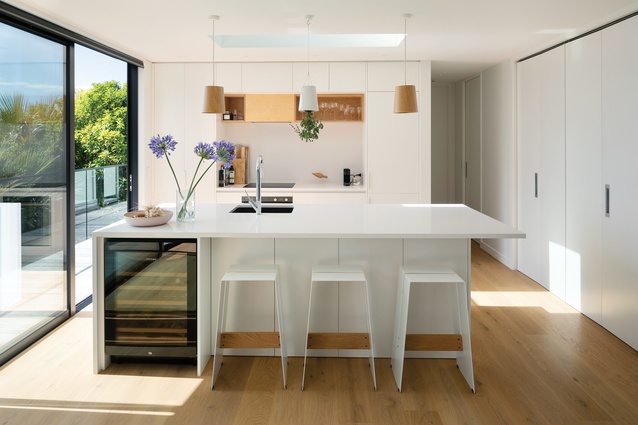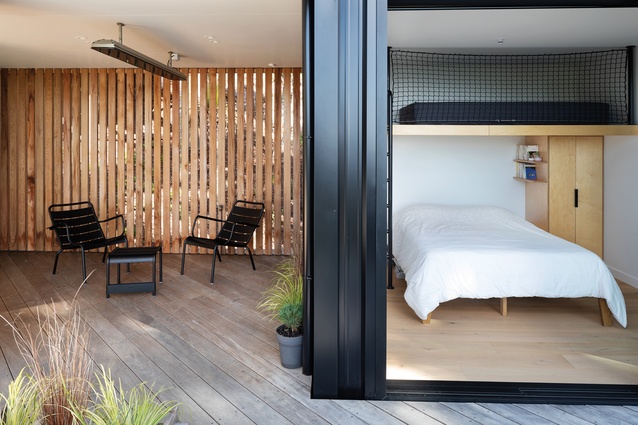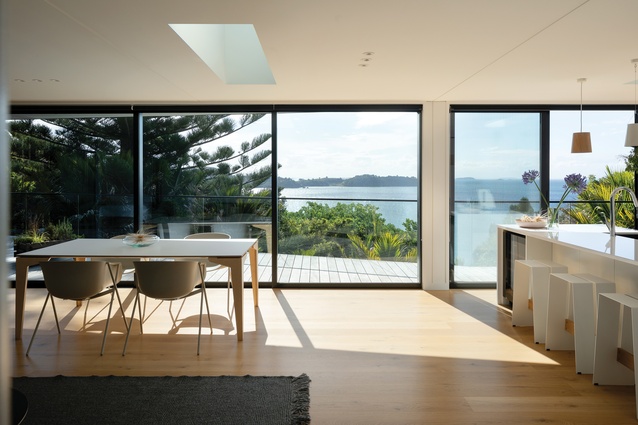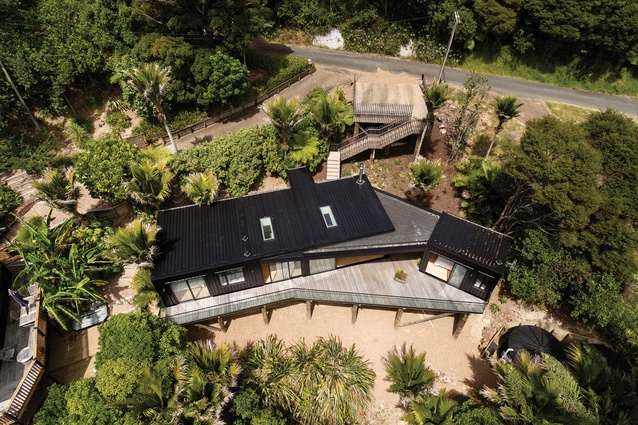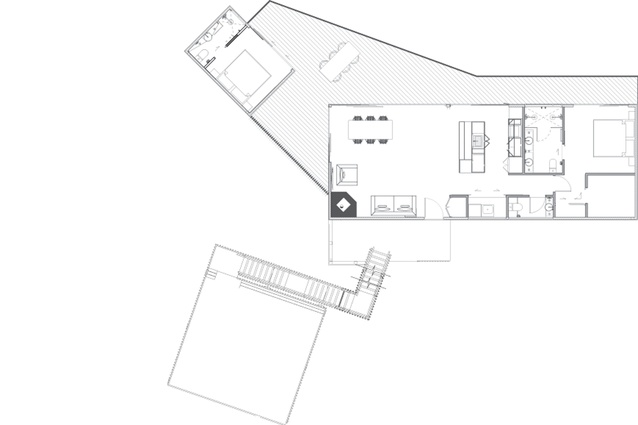Outside the box: Onetangi modular living
A steep, narrow site on Waiheke Island provided the perfect opportunity for Box to deliver its modular architecture.
Securing a section on the cliff edge at Onetangi, Waiheke Island, overlooking the bush and sea is next to impossible. But, if Sophie Curabet and partner Sebastien Pham thought that finding their dream section was difficult, they weren’t quite prepared for the challenges of building on the steep, narrow site.
Not only was the site restrictive but the build budget was too. It meant that an initial design that was prepared for the site had to be thrown out after six months, because of excessive cost.
Fortunately, Curabet had heard of a company called Box, which specialises in modular, transportable homes, and she made contact to see if a modular build might be possible for the challenging site and within her strict budget constraints.
Box was happy to accommodate and both parties agreed that the home would stay within the footprint of the original design that had already gained council consent.
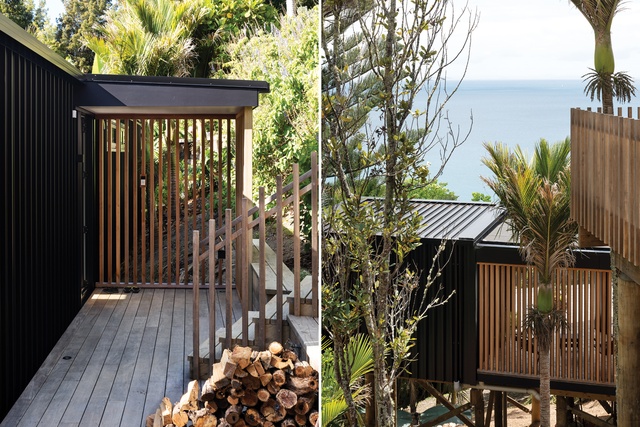
Within that footprint, it was decided that two living silos were required: one containing the main living spaces, the master bedroom and an en suite, and the other a separate guest wing. Within the modular format, a covered, sheltered outdoor space connects the two.
Architect Tim Dorrington, who worked on the design, says the approach to the house was an important driver of the architecture, because the home is accessed by walking down a steep hill.
Therefore, the roofing design was conceived to expose and highlight the composition of the house.
“Instead of running a roof over the whole lot and disguising it, we’re letting people see how it was put together.”
As the design developed, a strategic analysis of the site was made, and it was discovered that adjustments would need to be made to the design of the modules in order to transport them to the site.
They were being manufactured in a factory in Henderson (while the foundations were being completed on site) but, strangely enough, it was neither the trip on the truck nor the ferry journey that was causing problems. “It was getting them off the ferry and taking them up the windy, narrow roads on Waiheke – the truck would have fallen off the side of the road!”
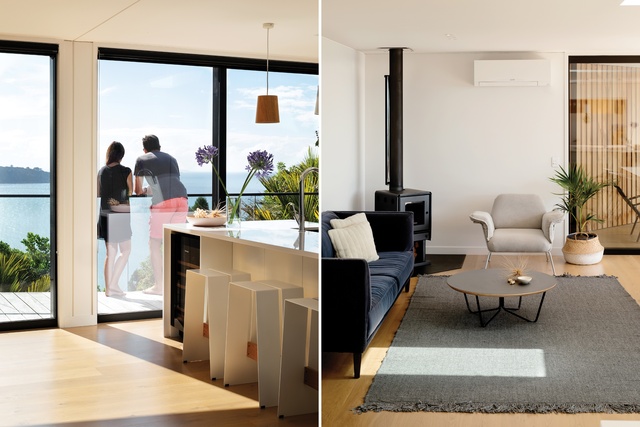
It meant a smaller truck was required, and, with it, a narrower and shorter module design. Much to Curabet’s dismay, this meant cutting the height of the modules. The large modules were then also reconfigured into six smaller modules.
On the day of transportation, power lines had to be dropped to allow a crane onto the site and the owners awaited the arrival of the modules with bated breath.
But, after all the challenges they’d experienced in the design process, the transportation phase was a dream.
The modules arrived on site virtually finished, says Dorrington. “The roofs were clad, the walls were clad, the windows were in, the lining was done, the bathrooms were done – it was quite incredible really.”
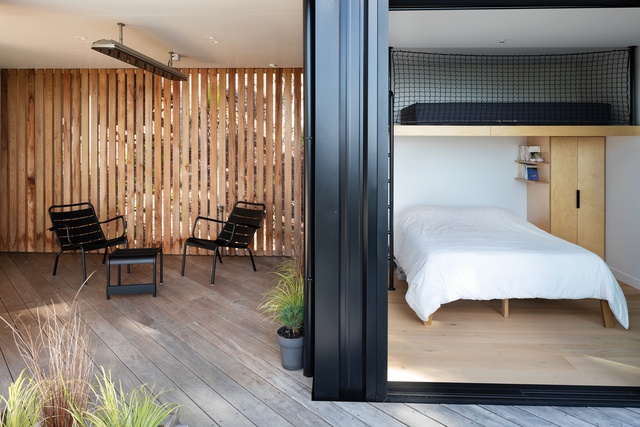
It took only two days to position each of the modules onto the bearers and, once the roof joins were made between them, the home was effectively complete.
The finishes in the airy, Scandinavia-inspired interior took only a further two months, and the owners were handed the keys.
Entering the home for the first time was a nerve-wracking experience for Curabet, who was concerned the modifications to the design might lessen the impact of the incredible sea view.
She needn’t have worried. “The highlight was when we opened the house and we saw the view… now, every morning when I wakeup, I feel so grateful to have this view.”

Material Palette
Tim Dorrington discusses the roof and exterior cladding on the Waiheke House.
What was important in the materiality of the exterior of the home?
You’re often designing a house because of how it might look from the road or for when you’re sitting out in the backyard and looking back at the house. But, here, your experience of the house is either up-close details (therefore, we wanted to be very careful of the materials and the details we used) or the roof.
How does the roof design respond to this?
There was a lot of thought put into ‘How does the roof go together?’. It was going to be a pretty strong presentation of the house because that’s what you see from the road. The roof itself is a tin roof sloping back to an external fascia gutter, just to keep it simple really and mitigate any risk factor of leaking.
How do the materials balance and respond to the site?
There’s a lot of wood – it’s a bach [setting] and, to my mind, that sits well. We have hardwood decking, cedar screens, timber floor and timber lining inside. The cladding is tin, because it’s deemed to be more robust in that environment. You can imagine, if it were a painted house and you had to erect scaffolding around that house in a few years’ time, it would be a complete nightmare!
This article first appeared in Houses magazine.


